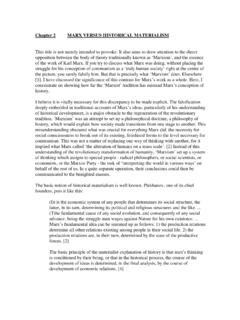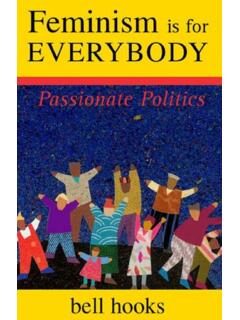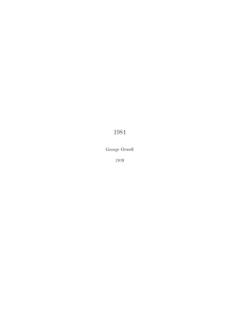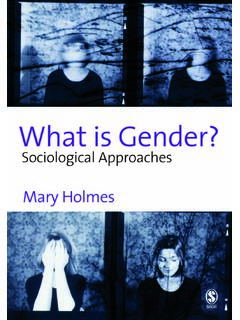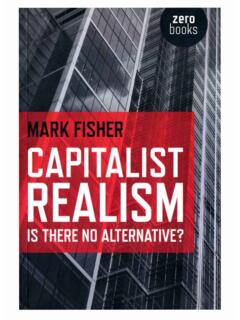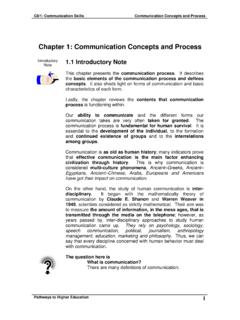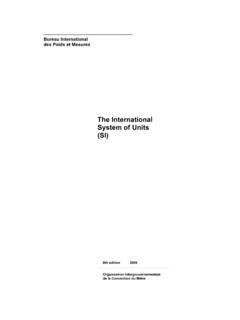Transcription of The Age of Revolution - Libcom.org
1 The Age of Revolution i789-1848. E R I C hobsbawm . VINTAGE BOOKS. A Division of Random House, Inc. New York FIRST VINTAGE BOOKS EDITION, AUGUST 1996. Copyright 1962 by E. J. hobsbawm All rights reserved under International and Pan-American Copyright Conventions. Published in the United States by Vintage Books, a division of Random House, Inc., New York. Originally published in Great Britain in hardcover by Weidenfeld & Nicolson, London, in 1962. Library of Congress Cataloging-in-Publication Data hobsbawm , (EricJ.)
2 , 1917- The Age of Revolution , 1789-1898 / eric hobsbawm . 1st Vintage Books ed. p. cm. Originally published: London : Weidenfeld & Nicolson, 1962. Includes bibliographical references (p. ) and index. ISBN 0-679-77253-7. 1. Europe History 1789-1900. 2. Industrial Revolution . I. Title. 1996. '7 dc20 96-7765. CIP. Random House Web address: Printed in the United States of America 10 9 8 7 6. CONTENTS. PREFACE IX. INTRODUCTION I. PART I. DEVELOPMENTS. I T H E WORLD IN T H E I 7 8 0 S 7. 2 T H E INDUSTRIAL R E V O L U T I O N 27.
3 3 T H E F R E N C H Revolution 53. 4 WAR 77. 5 PEACE 99. 6 REVOLUTIONS log 7 NATIONALISM I32. PART / / . RESULTS. 8 LAND 149. 9 T O W A R D S AN I N D U S T R I A L W O R L D L68. IO T H E C A R E E R O P E N T O T A L E N T 182. II THE LABOURING POOR 200. 12 I D E O L O G Y : R E L I G I O N 217. 13 I D E O L O G Y : S E C U L A R 234. 14 THE ARTS 253. 15 S C I E N C E 277. 16 C O N C L U S I O N : T O W A R D S 1 8 4 8 297. MAPS 309. NOTES 321. BIBLIOGRAPHY 332. INDEX 339. MAPS. page i Europe in 1789 309. 2 Europe in 1810 310.
4 3 Europe in 1840 311. 4 World Population in Large Cities: 1800-1850 31a 5 Western Culture 1815-1848: Opera 314. 6 The States of Europe in 1836 316. 7 Workshop of the World 317. 8 Industrialization of Europe: 1850 318. 9 Spread of French Law 320. PREFACE. THIS book traces the transformation of the world between 1789 and 1848 insofar as it was due to what is here called the 'dual revolu- tion' the French Revolution of 1789 and the contemporaneous (Brit- ish) Industrial Revolution . It is therefore strictly neither a history of Europe nor of the world.
5 Insofar as a country felt the repercussions of the dual Revolution in this period, I have attempted to refer to it, though often cursorily. Insofar as the impact of the Revolution on it in this period was negligible, I have omitted it. Hence the reader will find something about Egypt here, but not about Japan; more about Ireland than about Bulgaria, about Latin America than about Africa. Naturally this does not mean that the histories of the countries and peoples neg- lected in this volume are less interesting or important than those which are included.
6 If its perspective is primarily European, or more precisely, Franco-British, it is because in this period the world nor at least a large part of it was transformed from a European, or rather a Franco- British, base. However, certain topics which might well have deserved more detailed treatment have also been left aside, not only for reasons of space, but because (like the history of the USA) they are treated at length in other volumes in this series. The object of this book is not detailed narrative, but interpretation and what the French call haute vulgarisation.
7 Its ideal reader is that theoretical construct, the intelligent and educated citizen, who is not merely curious about the past, but wishes to understand how and why the world has come to be what it is today and whither it is going. Hence it would be pedantic and uncalled-for to load the text with as heavy an apparatus of scholarship as it ought to carry for a more learned public. My notes therefore refer almost entirely to the sources of actual quota- tions and figures, or in some cases to the authority for statements which are particularly controversial or surprising.
8 Nevertheless, it is only fair to say something about the material on which a very wide-ranging book such as this is based. All historians are more expert (or to put it another way, more ignorant) in some fields than in others. Outside a fairly narrow zone they must rely largely on IX. PREFACE. the work of other historians. For the period 1789 to 1848 this secondary literature alone forms a mass of print so vast as to be beyond the know- ledge of any individual, even one who can read all the languages in which it is written.
9 (In fact, of course, all historians are confined to a handful of languages at most.) Much of this book is therefore second- or even third-hand, and it will inevitably contain errors, as well as the inevitable foreshortenings which the expert will regret, as the author does. A bibliography is provided as a guide to further study. Though the web of history cannot be unravelled into separate threads without destroying it, a certain amount of subdivision of die subject is, for practical purposes, essential. I have attempted, very roughly, to divide the book into two.
10 Parts. The first jdeals broadly .with the main developments f-the sketches the kind of society produced by the dual Revolution . There are, however, deliberate overlaps, and the distinction is a matter not of theory but of pure convenience. My thanks are due to various people with whom I have discussed aspects of this book or who have read chapters in draft or proof, but who are not responsible for my errors; notably J. D. Bernal, Douglas Dakin, Ernst Fischer, Francis Haskell, H. G. Koenigsberger and R. F. Leslie.
